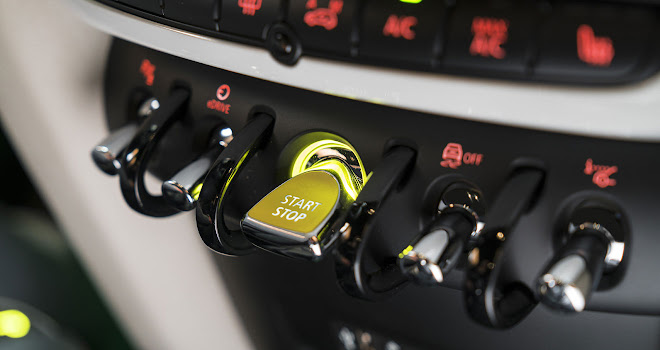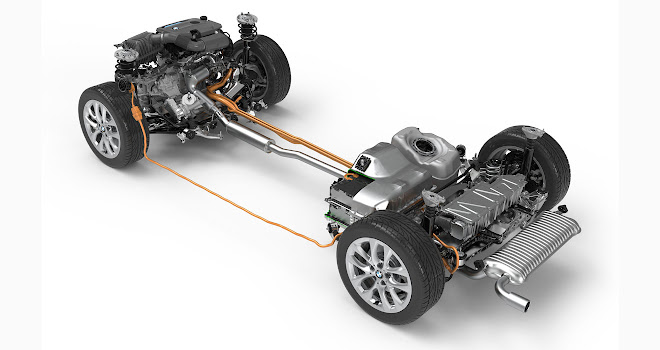Updated 3 March 2017: It was way back in 2009 that we last saw a Mini with a plug, in the compact shape of the Mini E. That car was a suck-it-and-see prototype, built in small numbers with off-the-shelf batteries, and never put on sale. But it has finally spawned a production successor in the shape of the new Mini Countryman plug-in hybrid EV.
The new plug-in Mini will go on sale from 24 June this year.

Of course the Mini E wasn’t quite the dead-end it might have appeared – it laid the groundwork for the i3 electric car produced by Mini parent company BMW.
Sadly the new Countryman plug-in will not be quite as ambitious as a carbon-bodied, born-electric i3 but it should provide some worthwhile capabilities. The Mini Cooper S E Countryman All4, to quote its full title, will be able to travel for up to 25 miles on each charge of its 7.6kWh lithium-ion battery, at speeds of up to 78mph. About 20 miles will probably turn out to be a realistic, real-world electric range when driven with a bit of care.

A 65kW (87bhp) electric motor will drive the rear axle, providing up to 165Nm of torque. A full recharge should take about 2.5 hours using a 3.7kW (16-amp) wallbox.
When the car isn’t running in EV mode a three-cylinder 1.5-litre petrol engine will also contribute from under the bonnet. It will propel the front wheels through a six-speed automatic gearbox, providing up to 134bhp and 220Nm. Cleverly, when using its satnav, the car will be able to work out when will be most efficient to spend the mains charge from the battery, rather than simply setting off and running in EV guise until the voltage starts to flag.
When pooling their efforts, the engine and motor will be capable of hurling the Countryman S E to 62mph in 6.8 seconds, according to the car’s maker.

The overall output of the hybrid system will add up to 221bhp and a substantial 385Nm – enough to make the S E about half a second quicker off the mark than a diesel SD All4 or petrol Countryman S All4.
That level of performance will arise despite the need to carry about 130kg more weight than the diesel or petrol models. The electric motor’s torque will clearly make itself felt.

The drive battery has been built to nestle under the rear bench, squeezed in next to a 36-litre fuel tank (cars with conventional engines get a 51-litre tank). The hybrid’s rear seat will be slightly raised, apparently, while the boot loses 45 litres to make room for the motor and its high-voltage electronics. Presumably the capacity to store a spare wheel will have been sacrificed as well.
The Countryman range starts at £22,465, while the plug-in edition will cost from £31,585, not counting a £2,500 contribution from the Plug-in Car Grant. The grant will result in an effective starting price of £29,085 – allowing the plug-in to squeak below the £29,565 starting price of the most expensive Countryman variant, the diesel Cooper SD All4.

With a CO2 rating that ranges from 49 to 52 grams per kilometre, according to which alloy wheels and tyres are fitted, the PHEV Countryman will fall into either Category 2 or 3 under the government’s grant scheme. There’s no financial difference at the moment, since both categories qualify for the same £2,500 contribution, but the grant is set to be reviewed in March so the situation could easily alter. If the government were to cancel grants for Category 3 cars, with CO2 ratings above 50g/km, it could make big alloys an expensive choice on this particular car.
When it comes to overall quality and value for money, the petrol and diesel Countryman models have garnered some lukewarm reviews, though the new car is generally seen as an improvement over the first-generation Countryman. We must wait and see how the plug-in variant squares up to its various rivals.

These include the BMW 225xe Active Tourer which, as it happens, uses exactly the same engine, battery and motor as the Countryman S E and also shares many other hidden components. It starts at £33,185 before the grant.
The Golf GTE, Audi A3 e-tron and Outlander PHEV might also be considered in the same shortlist, though there are no directly comparable vehicles. The premium, plug-in softroader market looks like a niche that the Countryman S E will have all to itself, for a while at least.










